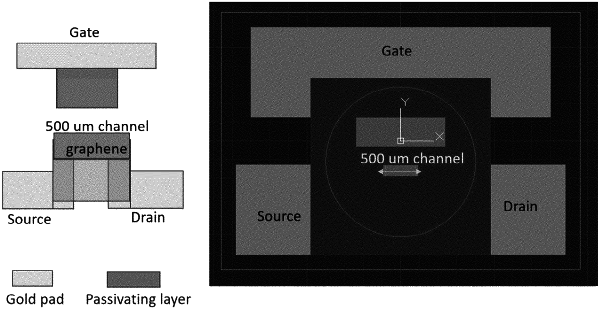| CPC G01N 33/5438 (2013.01) [C12Q 1/68 (2013.01); C12Q 1/6816 (2013.01); G01N 27/00 (2013.01); G01N 33/56983 (2013.01); G01N 2333/165 (2013.01); H01L 2924/1306 (2013.01)] | 20 Claims |

|
1. A biosensor device for detecting one or more pathogens, comprising:
a detection chip, comprising:
a substrate comprising a graphene surface with an engineered roughness of 2±0.2 nm, wherein the graphene surface is maintained at a fixed voltage;
a conducting material at a first end and a second end of the graphene surface that form a first electrode and a second electrode, respectively, wherein the first electrode and the second electrode correspond to a source and a drain, respectively, and wherein the source and the drain are positioned in a same plane as a third electrode corresponding to an extended gate; and
an insulating material to insulate the first electrode and the second electrode,
wherein one or more probes are attached to the graphene surface,
wherein the one or more probes specifically bind to one or more target molecules of the one or more pathogens,
wherein at least one of the one or more probes is an aptamer,
wherein the aptamer is a peptide molecule or an oligonucleotide molecule that has been modified at its 3′ end, and
wherein the insulating material forms a well to receive a biological sample such that the biological sample is in contact with the one or more probes and the graphene surface.
|